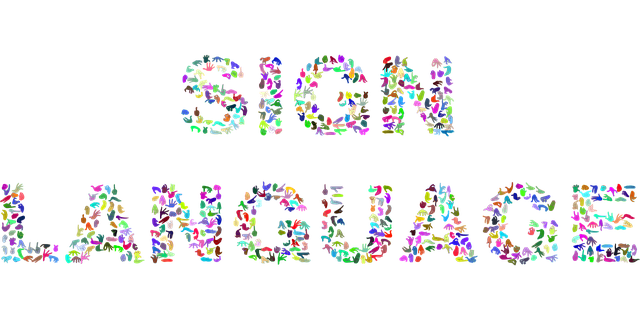
Category: Tech Resources for Disabled Seniors in Eugene Oregon
Tech Resources for Disabled Seniors in Eugene, Oregon: Empowering Independence and Accessibility
Introduction
In the rapidly evolving digital landscape of Eugene, Oregon, ensuring that disabled seniors have access to technology is more crucial than ever. This comprehensive article delves into the world of tech resources specifically tailored to meet the unique needs of this demographic, exploring how these resources enhance their quality of life, promote independence, and foster community engagement. By examining various aspects, from technological innovations to policy frameworks, we aim to shed light on the transformative potential of tech in the lives of disabled seniors.
Understanding Tech Resources for Disabled Seniors: A Comprehensive Definition
Tech resources for disabled seniors encompass a wide array of technological tools, services, and support systems designed to improve accessibility, communication, and overall well-being for individuals aged 65 and over with disabilities. This includes assistive technology, accessible software, adaptive devices, online platforms, and community initiatives that aim to bridge the digital divide faced by this population. The core components can be categorized as follows:
- Assistive Technology (AT): Devices and tools that help individuals with disabilities perform tasks more easily, such as screen readers, speech recognition software, and specialized keyboards.
- Accessible Software: Computer programs designed to accommodate users with visual, auditory, or motor impairments, ensuring they can access information and services.
- Adaptive Devices: Modified equipment like elevated keyboard trays, ergonomic chairs, or voice-controlled devices that cater to specific physical limitations.
- Online Accessibility Platforms: Websites and mobile apps with features like text-to-speech, closed captions, and simplified navigation, making digital content more inclusive.
- Community Support Initiatives: Local programs and services that offer training, peer support, and technical assistance to help seniors overcome digital barriers.
Historically, the focus on tech resources for disabled seniors has evolved from isolation and marginalization to empowerment and inclusion. As society recognizes the rights and contributions of individuals with disabilities, these resources play a vital role in ensuring equal opportunities and participation in all aspects of life, including education, employment, and social interactions.
Global Impact and Trends: A Growing Priority Across Borders
The global trend towards prioritizing digital accessibility for disabled seniors is evident across regions, driven by several key factors:
- Aging Population: Many countries are experiencing rapid aging, with a significant portion of the population reaching the senior age bracket. This increases the demand for accessible tech solutions to support their daily needs and maintain independence.
- United Nations Convention on the Rights of Persons with Disabilities (CRPD): Adopted in 2006, this convention promotes, protects, and ensures the full enjoyment of all human rights by persons with disabilities. Article 9 emphasizes accessibility in both physical environments and information and communications technologies.
- Digital Inclusion Initiatives: Governments worldwide are recognizing the importance of digital literacy and accessibility to prevent social exclusion and promote economic participation. Many countries have launched national strategies and programs to bridge the digital divide, especially for marginalized communities, including disabled seniors.
For instance, a study by the World Health Organization (WHO) revealed that only 14% of countries worldwide meet the basic accessibility standards for persons with disabilities in mobile phone technologies. This highlights the vast room for improvement and the growing global push to make technology more inclusive.
Economic Considerations: Market Dynamics and Impact
The market for tech resources catering to disabled seniors is experiencing significant growth, driven by several economic factors:
- Demographic Shifts: The aging population, as mentioned earlier, presents a substantial consumer base with increasing disposable income, leading to higher demand for accessible technology.
- Government Funding and Support: Many governments are investing in accessibility initiatives, providing financial incentives and grants to develop and promote tech solutions that benefit disabled citizens.
- Private Sector Innovation: Companies are recognizing the untapped potential of this market segment, leading to increased R&D and product development aimed at enhancing digital accessibility.
The economic impact is multifaceted:
| Impact Area | Description |
|---|---|
| Job Creation | The growth in assistive technology companies and related services creates new job opportunities for developers, designers, and support staff. |
| Increased Consumer Spending | Disabled seniors, with improved access to technology, are likely to spend more on digital products and services, stimulating the economy. |
| Reduced Healthcare Costs | By enabling independence and better home management, tech resources can reduce the need for frequent medical visits and institutional care, leading to potential cost savings for healthcare systems. |
Technological Advancements: Shaping the Future of Accessibility
The field of assistive technology has witnessed remarkable advancements in recent years, driven by rapid technological progress:
- Artificial Intelligence (AI) and Machine Learning: These technologies enable personalized assistance, natural language processing for voice commands, and intelligent adaptation to user needs. AI-powered chatbots can provide support for various tasks, from scheduling appointments to offering mental health resources.
- Internet of Things (IoT): Smart home devices and wearable technology offer unprecedented levels of accessibility and convenience. For instance, smart speakers with voice control allow users to operate lights, thermostats, and security systems hands-free.
- Virtual and Augmented Reality: These immersive technologies have applications in rehabilitation, pain management, and social interaction. Virtual reality (VR) can provide safe, controlled environments for practicing physical activities or social skills.
- Advanced Prosthetics and Exoskeletons: Robotics and bionics are revolutionizing mobility and independence for individuals with physical disabilities. Exoskeletons, for example, can assist users in standing, walking, and lifting objects.
Policy and Regulation: Navigating the Legal Landscape
The development and deployment of tech resources for disabled seniors are guided by various policies and regulations worldwide, ensuring accessibility, privacy, and consumer protection:
- Web Content Accessibility Guidelines (WCAG): These guidelines provide a global standard for web accessibility, offering best practices for creating content that can be accessed by people with disabilities. Many countries have adopted these guidelines as legal requirements.
- Disability Discrimination Acts: Various nations have enacted laws prohibiting discrimination against individuals with disabilities in various sectors, including technology access and services.
- Privacy Regulations: Data protection laws, such as the General Data Protection Regulation (GDPR) in Europe, ensure that personal information collected through tech resources is handled securely and transparently.
- National Accessibility Strategies: Many countries have developed comprehensive national plans to improve accessibility across various sectors, including technology, education, and transportation.
Challenges and Criticisms: Overcoming Barriers to Inclusion
Despite the progress made, several challenges and criticisms persist in the realm of tech resources for disabled seniors:
- Cost and Accessibility: While technological advancements offer solutions, many assistive devices and software are expensive, limiting accessibility for low-income seniors. Subsidies and insurance coverage are essential to address this issue.
- Lack of Training and Support: Some disabled individuals may struggle with using new technology due to a lack of proper training and ongoing support. Community initiatives and partnerships between tech companies and disability organizations can help bridge this gap.
- Digital Literacy and Skill Disparities: Older adults, especially those from less privileged backgrounds, may face challenges in developing digital literacy skills. Providing accessible training programs tailored to their needs is crucial.
- Privacy and Data Security Concerns: As more seniors adopt technology, protecting their personal information becomes critical. Ensuring data security and privacy in online platforms and services is essential to building trust.
Actionable Solutions:
- Government Subsidies and Insurance Coverage: Implement policies to subsidize assistive technology and related services, making them more affordable for low-income seniors.
- Community Training Programs: Develop accessible training initiatives that cater to diverse skill levels, ensuring digital literacy among disabled seniors.
- Public-Private Partnerships: Collaborate with tech companies and disability organizations to create supportive ecosystems and promote peer mentoring programs.
- Data Security Standards: Enforce robust data protection regulations and educate users about online privacy measures to build trust in digital services.
Case Studies: Real-World Success Stories
1. Eugene SeniorTech Hub:
The City of Eugene, Oregon, launched the SeniorTech Hub, a community initiative aimed at bridging the digital divide among seniors. This program offers free workshops, one-on-one training, and a lending library of assistive devices. The hub provides a supportive environment where seniors can learn new skills, connect with peers, and access technology resources tailored to their needs. As a result, participation has led to improved digital literacy, enhanced social engagement, and increased independence for many elderly residents.
2. Oregon Assistive Technology Program (OATP):
OATP is a state-funded program that provides loan programs, assessments, and training for individuals with disabilities in Oregon. They offer a wide range of assistive technology devices, from screen readers and alternative input devices to specialized software. OATP’s personalized approach ensures that users receive the support needed to choose and use the right tools for their specific disabilities. This program has been instrumental in empowering disabled seniors across the state to live more independently.
3. Digital Inclusion Project – Vancouver, Canada:
Vancouver’s Digital Inclusion Project focuses on providing digital skills training and access to technology for marginalized communities, including older adults with disabilities. They offer tailored workshops, computer access at community centers, and a helpline for technical support. The project has been successful in increasing digital literacy, enabling seniors to access online services, stay connected with loved ones, and participate more actively in community activities.
Future Prospects: Emerging Trends and Growth Areas
The future of tech resources for disabled seniors is filled with promising possibilities, driven by technological advancements and growing global awareness:
- Personalized Assistive Technologies: With the rise of AI and IoT, personalized assistance will become more common. Devices and software can learn individual user preferences and needs, offering tailored solutions for daily tasks.
- Remote Rehabilitation and Healthcare: Virtual reality and telemedicine have the potential to revolutionize rehabilitation, pain management, and mental health support. Remote services can improve access to specialized care, especially in rural areas.
- Smart Home Integration: As smart home devices become more prevalent, seamless integration with assistive technology will enhance independence. For example, voice-controlled lighting systems can be synchronized with schedules and routines for individuals with limited mobility.
- Community-Based Support Networks: Building upon the success of community initiatives like Eugene SeniorTech Hub, collaborative networks will foster peer support, knowledge sharing, and social engagement among disabled seniors.
Conclusion: Empowering a Brighter Future
Tech resources for disabled seniors in Eugene, Oregon, represent a powerful tool for fostering independence, enhancing accessibility, and promoting active participation in society. The global trend towards digital inclusion ensures that technological advancements continue to cater to the unique needs of this demographic. By addressing economic considerations, embracing technological innovations, and implementing effective policies, we can create a more inclusive future where disabled seniors thrive alongside their peers.
FAQ Section:
Q: How do I access affordable assistive technology?
A: Many organizations offer subsidies, grants, or loan programs for assistive devices and software. Contact local disability resource centers or government agencies to inquire about available options in your area.
Q: Are there online communities for disabled seniors interested in tech?
A: Absolutely! Online forums, social media groups, and community platforms provide spaces for sharing experiences, seeking advice, and connecting with peers who have similar interests in technology.
Q: What role do local libraries play in promoting digital accessibility?
A: Libraries often offer free computer access, basic training, and online resources to support digital literacy among seniors. Some even provide lending programs for assistive devices.
Q: How can I ensure data security when using online services?
A: Always use strong, unique passwords and enable two-factor authentication where available. Be cautious of sharing personal information, and ensure the websites you use have secure connections (look for “https” in the URL). Regularly update your devices and software to protect against potential vulnerabilities.









